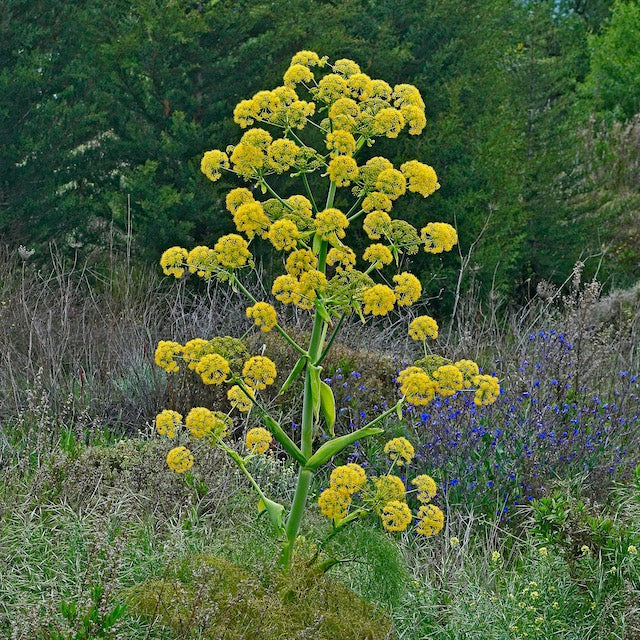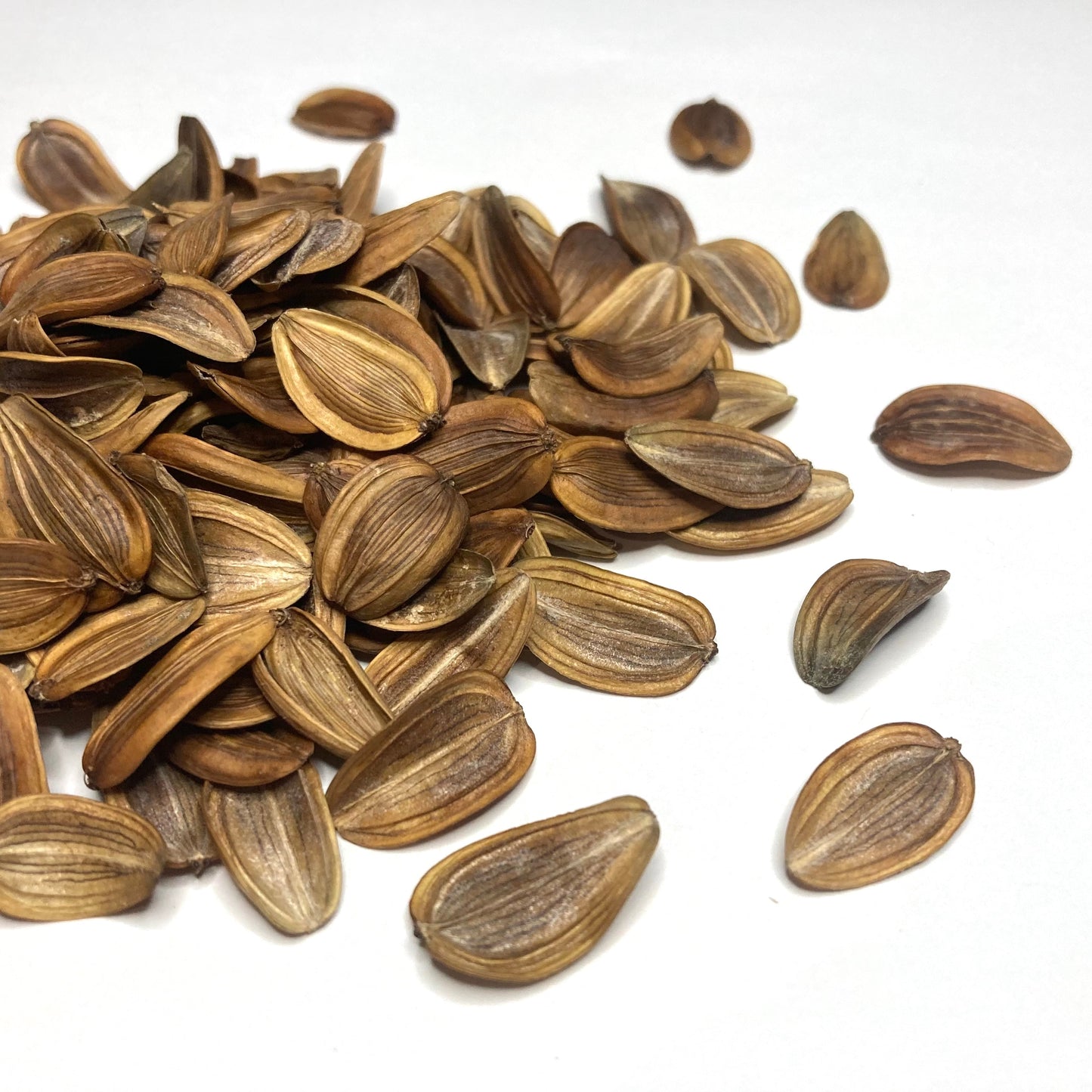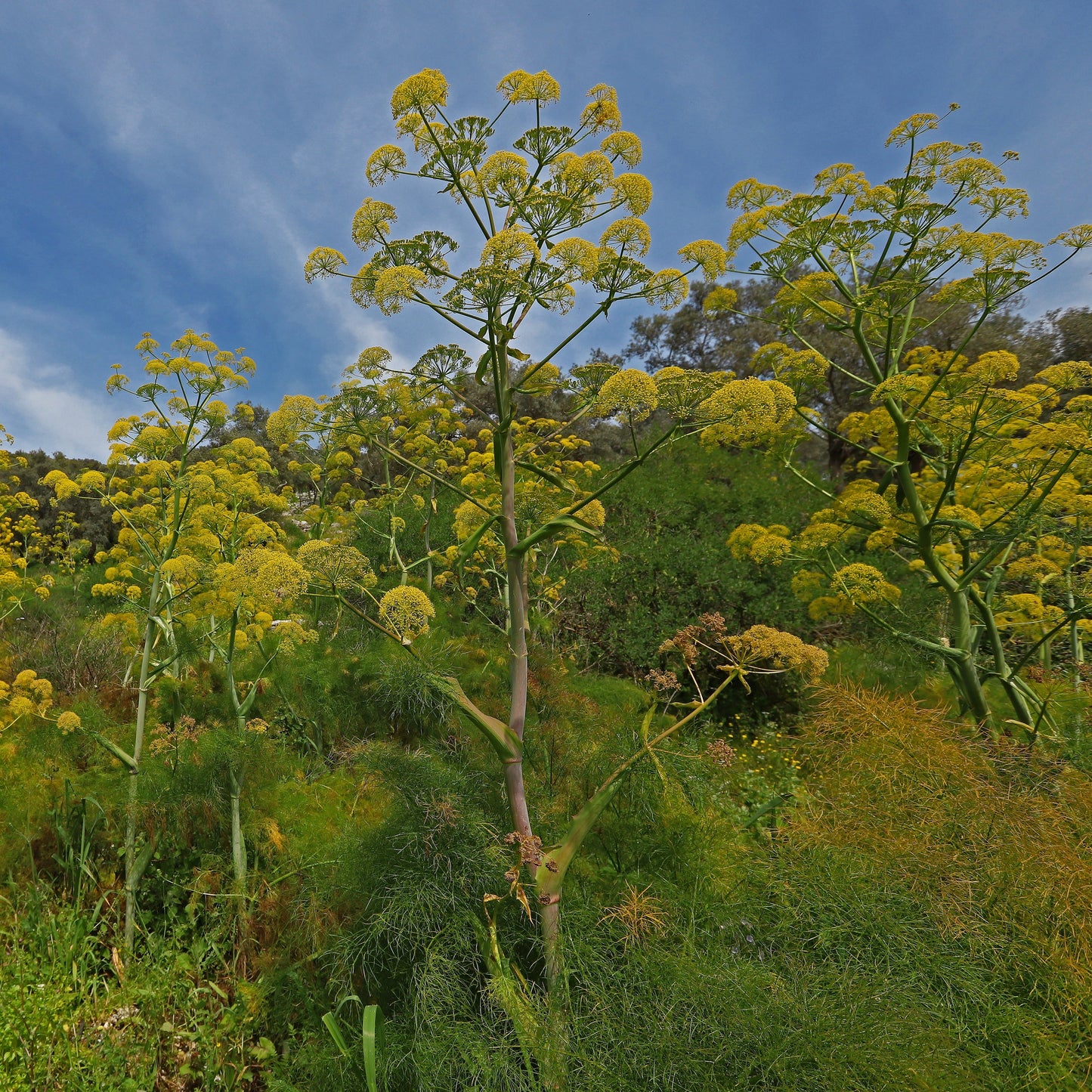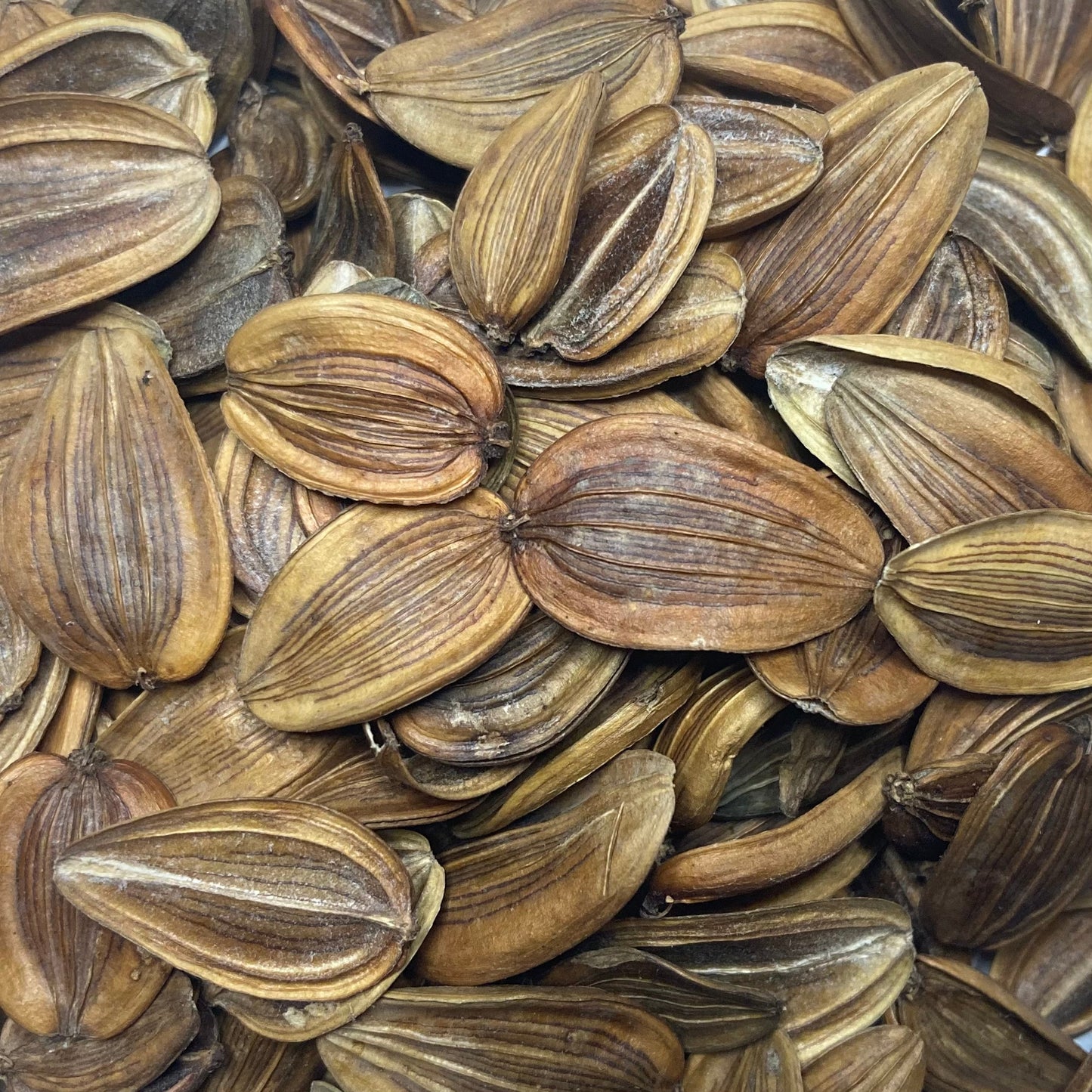Fennel, Giant (Ferula communis)
List Price: $4.00
Couldn't load pickup availability
While the common name of this plant associates it with the cultivated vegetable fennel, Ferula communis is not a true fennel, though they share physiological characteristics. They both are a part of the carrot family, Apiaciae. There are potential herbal applications of Giant Fennel, but it is not edible as its name may suggest. Ferula originates from the word ‘ferule,’ a schoolmaster’s rod used to punish children, a dark reference to its sticklike stem. Sprouting tenderly from woody old-growth in the spring, Giant Fennel grows six to ten feet tall throughout the summer (up to fifteen feet, even!). This perennial herb has both male and female parts, and is self-fertile; it is pollinated by flies.
Giant Fennel played a prominent role in Greek mythology: it is said that the titan Prometheus, who created humankind, made use of the large amount of pith in great fennel’s hollow stalk as a vessel for stealing fire from the gods to bring down to earth. Ferula communis was the sacred plant of the Greek god of blacksmithing and fire, Hephaestus. And, the Greek god of wine and debauchery Dionysis carried a thrysus, a sacred staff made from the fennel stalk.
Traditional uses include fever and dysentery (from the roasted flower heads), as well use of the rhizome in Saudi Arabia for skin infections. Since antiquity, resin extracted from its deep taproot in the height of summer has been used in herbal preparations as well. This is also the source of gum ammoniac, and Ferula communis produces the phenolic compound ferulic acid as well.
A revered and fire-bearing plant such as this reminds us of the knowledge, insight, and creativity that the first human flame represented.
Giant Fennel, Fire-bearer,
show me the wisdom of containment,
so I may be a vessel
of slow-burning embers
that ignite the way of being.







